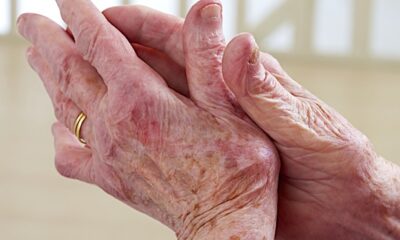Science
New Research Reveals Cilia’s Role in Lung Infection Defense

Scientists at the University of Cambridge have uncovered a novel mechanism by which human airways protect the lungs from infection. Their research highlights the significant role of cilia, the tiny hair-like structures that line the respiratory tract, in not only moving mucus but also creating a protective fluid motion away from the airway surface.
In a study published on July 14, 2025, in the Proceedings of the National Academy of Sciences, Dr. Erika Causa and her team, under the guidance of Professor Pietro Cicuta, explored the dynamics of ciliary movement. Their findings reveal that cilia generate both lateral and vertical fluid flows, which could enhance the airway’s defenses by preventing harmful particles, such as bacteria and viruses, from reaching the epithelial cells lining the airways.
Understanding Cilia Dynamics
The research team employed advanced techniques to track fluid movement in real time within cultured human airway epithelia. They discovered that coordinated ciliary beating produces rapid horizontal flows alongside slower vertical flows. This dual action creates what the researchers term a “dynamic barrier,” an essential feature that was previously unrecognized.
Dr. Debasish Das from the University of Strathclyde contributed mathematical modeling to support these experimental insights. His simulations, based on slender-body theory, demonstrated that vertical flows only occur when cilia beat in synchrony, emphasizing the importance of coordinated movement for effective airway defense.
The implications of this research are significant, particularly for individuals with ciliary function disorders such as cystic fibrosis and primary ciliary dyskinesia. In these conditions, impaired ciliary action leads to compromised mucus clearance, increasing the risk of respiratory infections. Notably, when cilia enter a state of immobility, known as ciliostasis, studies have shown a marked increase in viral replication, including pathogens like H3N2 influenza and SARS-CoV-2, which targets ciliated airway cells.
Potential for Future Treatments
Dr. Das explained, “Our findings show that cilia don’t just move mucus along the airways; they also push fluid upward, away from the lung lining. Coordinated ciliary beating not only maintains respiratory health by clearing mucus but also provides a dynamic barrier against pathogen entry.” This new understanding could pave the way for improved treatments for respiratory conditions linked to ciliary dysfunction.
As research continues, the insights gained from this study may lead to innovative therapeutic approaches aimed at enhancing ciliary function and protecting lung health. The collaborative efforts of the University of Cambridge and the University of Strathclyde highlight the significance of interdisciplinary research in advancing our knowledge of respiratory biology and its implications for public health.
This study demonstrates the critical role that cilia play in maintaining lung health, opening new avenues for research and potential therapies aimed at combating respiratory infections effectively.
-

 World3 days ago
World3 days agoCoronation Street’s Shocking Murder Twist Reveals Family Secrets
-

 Entertainment4 months ago
Entertainment4 months agoKate Garraway Sells £2 Million Home Amid Financial Struggles
-

 Entertainment3 months ago
Entertainment3 months agoAnn Ming Reflects on ITV’s ‘I Fought the Law’ Drama
-

 Health3 months ago
Health3 months agoKatie Price Faces New Health Concerns After Cancer Symptoms Resurface
-

 Entertainment3 weeks ago
Entertainment3 weeks agoCoronation Street Fans React as Todd Faces Heartbreaking Choice
-

 World4 weeks ago
World4 weeks agoBailey Announces Heartbreaking Split from Rebecca After Reunion
-

 Entertainment6 days ago
Entertainment6 days agoTwo Stars Evicted from I’m A Celebrity Just Days Before Finale
-

 World6 days ago
World6 days agoKevin Sinfield Exceeds Fundraising Goal Ahead of Final Marathons
-

 Entertainment3 months ago
Entertainment3 months agoCoronation Street’s Carl Webster Faces Trouble with New Affairs
-

 Entertainment3 months ago
Entertainment3 months agoWhere is Tinder Swindler Simon Leviev? Latest Updates Revealed
-

 Entertainment4 months ago
Entertainment4 months agoMarkiplier Addresses AI Controversy During Livestream Response
-

 Science2 months ago
Science2 months agoBrian Cox Addresses Claims of Alien Probe in 3I/ATLAS Discovery

















